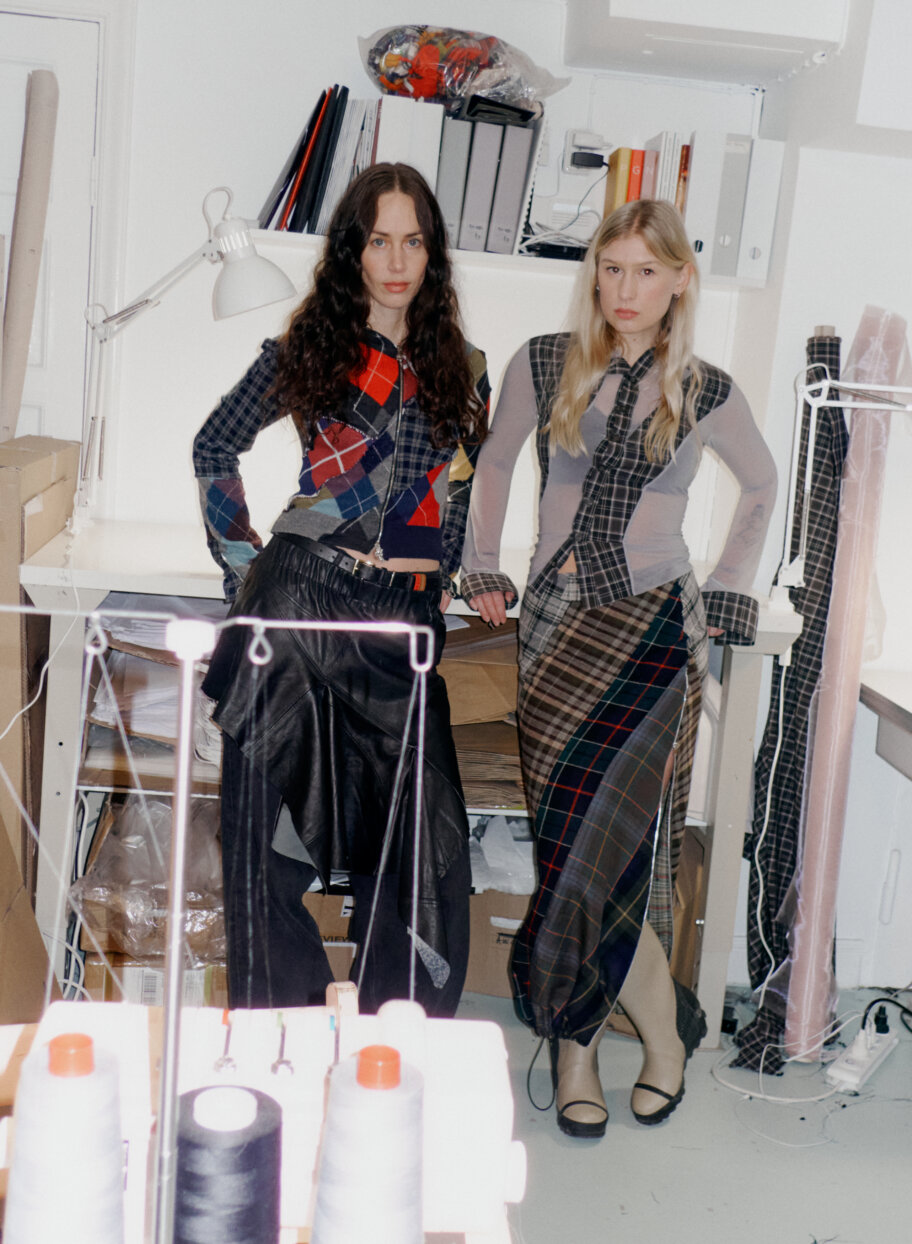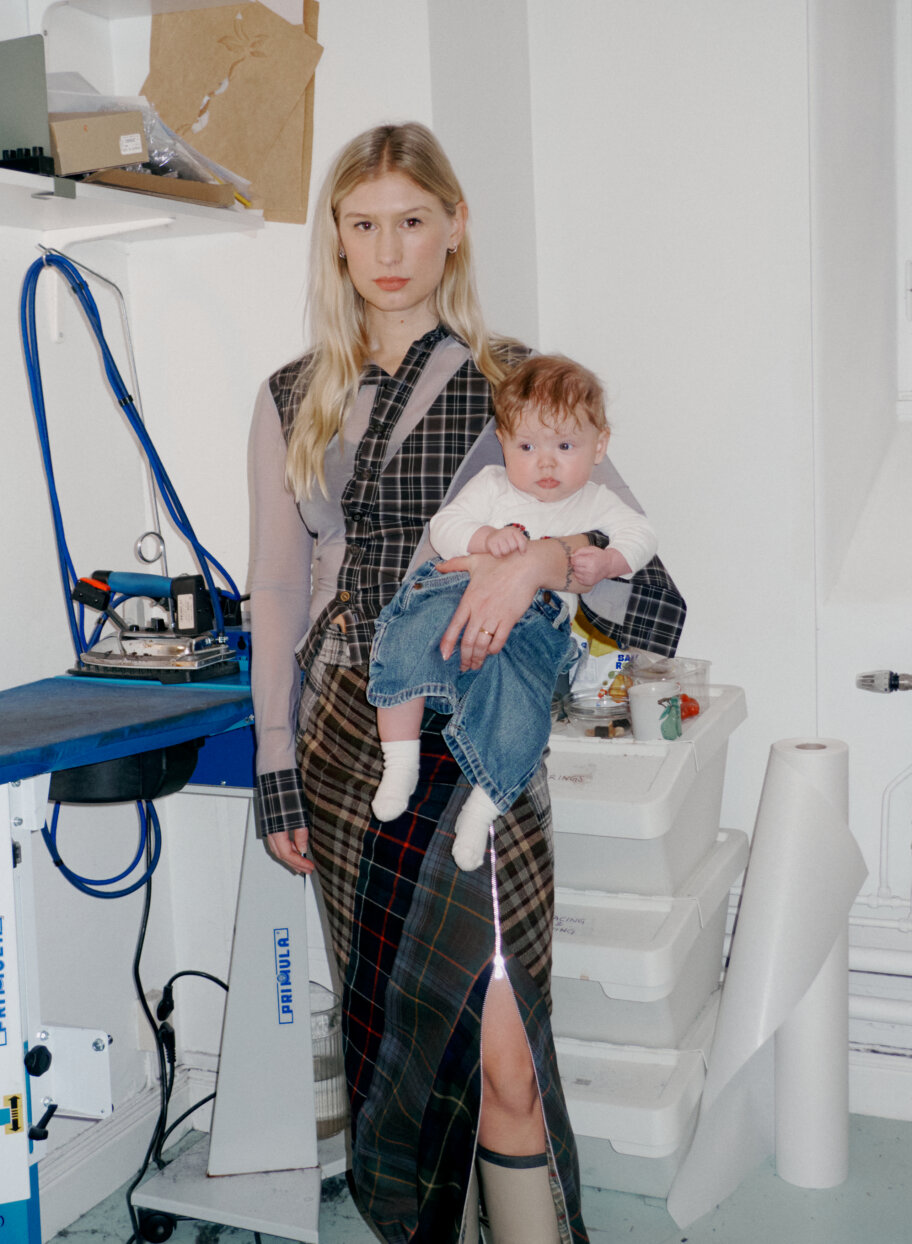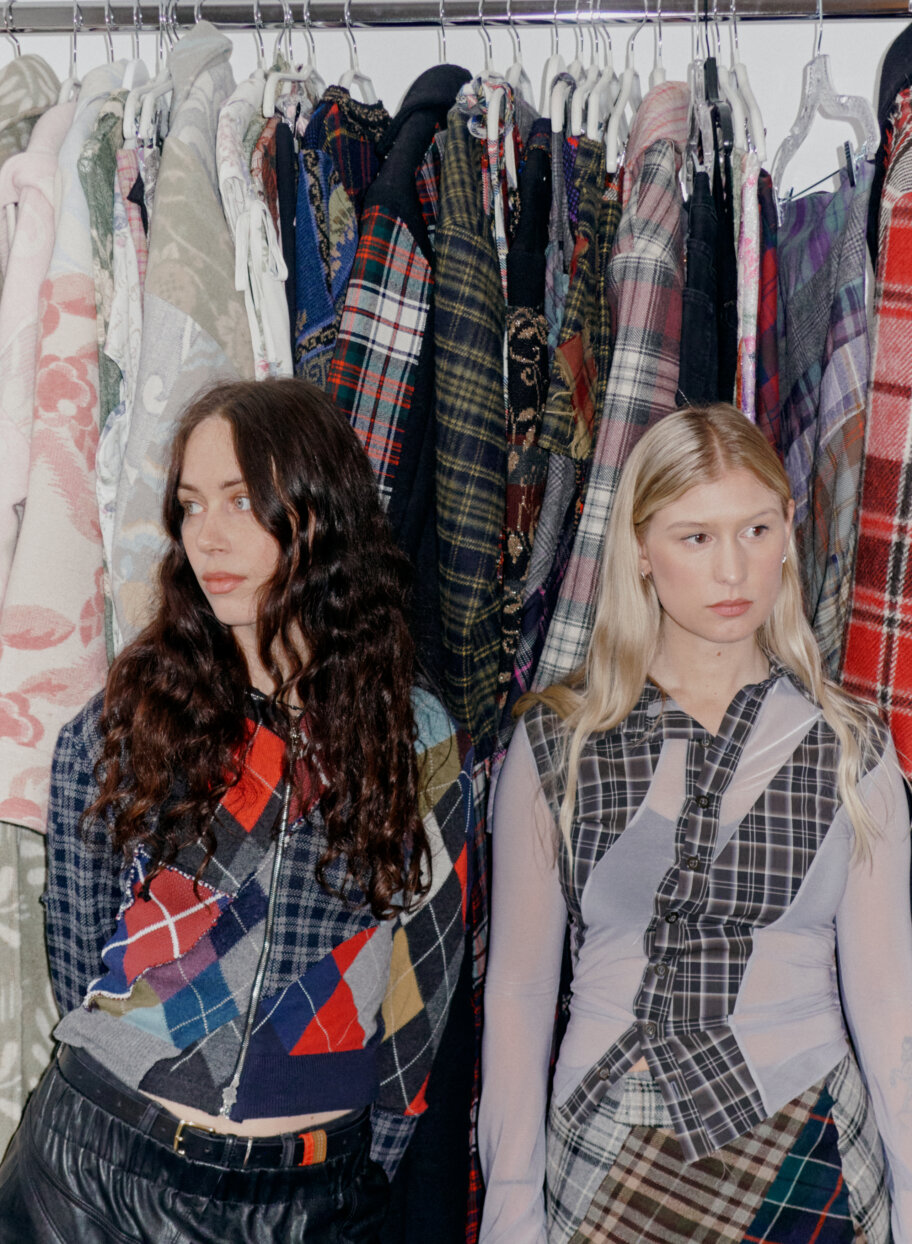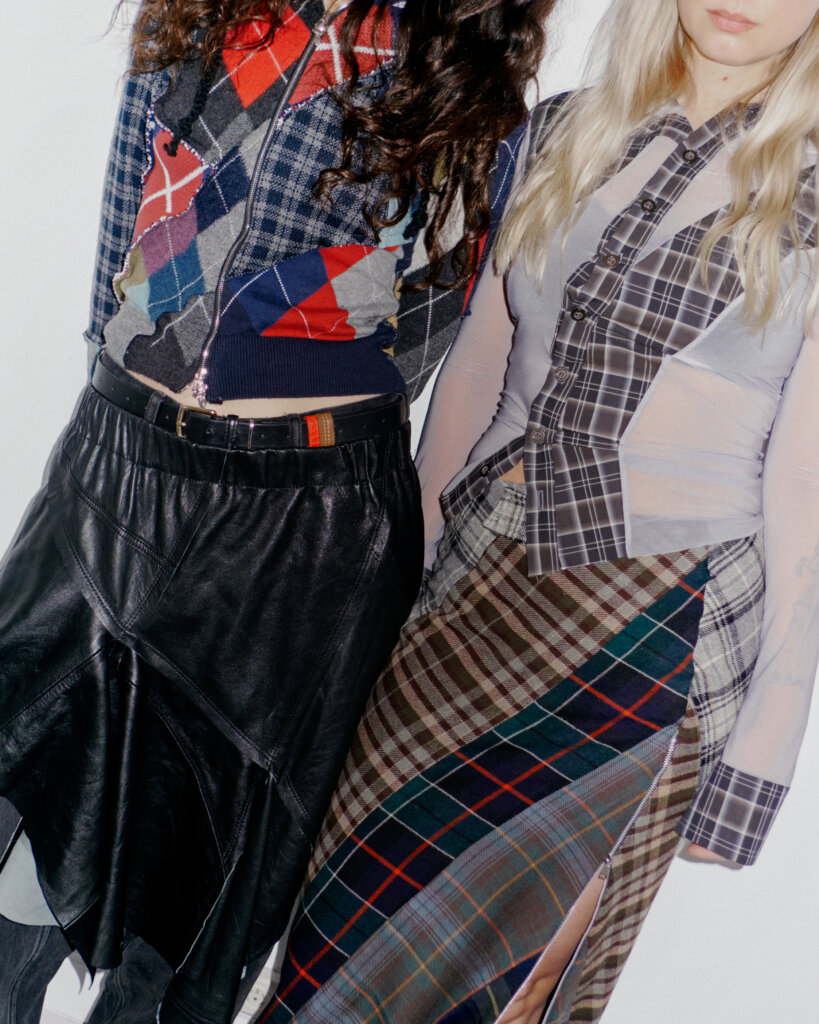
PHOTOGRAPHY JACOB & YAS @jacob__yas @bad_land.tv
INTERVIEW JESPER GUDBERGSEN @yessirjesper
Hi Josephine and Livia! Tell us about the origins of Rave Review
The idea of Rave Review came up pretty spontaneously. We simply weren’t satisfied designing for others and most importantly, we didn’t want to contribute to a wasteful and problematic industry, in terms of sustainability. We didn’t see any interesting brands at that time who did upcycled luxury fashion in an interesting way. We originally started in 2017, when we presented a small collection made entirely of bed sheets in Paris. In 2018, we started treating Rave Review as a proper brand and it’s been growing ever since then.
What do you consider a breakthrough moment for Rave Review?
We had a few moments. One of them was the first time we showed during the then still existing Stockholm Fashion Week in 2018. That season, we presented a coat made entirely from blankets, which gave us a huge breakthrough moment we didn’t really see coming, both in terms of publicity but also sales. The other one would possibly be right before the pandemic, when we were competing for the LVMH prize and showed outside of Sweden for the first time, during Copenhagen fashion week.
You decided to do this together – what is your favorite part of working as a team, and what are the downsides?
Josephine and I met when we were in the same class in fashion school. It sort of laid a very good foundation for working together and sharing aesthetic worlds, as we’re trained together. We have the same references and complement each other in terms of taste and some of our knowledge. The downside is probably that you also share all the tough aspects of running a company together – not only the good things. That’s something to think about before starting a company with your friend, I suppose. We’ve been through so many up and downs together and are still going strong, which is pretty amazing.


What does it mean to be a sustainable brand in 2024 and moving forward?
When we started, we were part of a bigger wave in a sense. It was trendy to be “sustainable” and work with remake in upcycling, but I don’t think people are talking about it to that extent anymore.
For us it doesn’t really matter, we wouldn’t compromise on it regardless as it’s the foundation of the brand. We will always find new solutions on how to evolve all those aspects, even as the industry changes.
What are the biggest challenges you face in your process of selecting responsible materials?
To find existing materials is not hard, but it is very hard to do this on a bigger scale and build an infrastructure around it to handle big amounts while guaranteeing quality.
Have those challenges changed since the beginning ?
For sure, since the start of the brand we have built a good network of sorting facilities in addition to a lot of connections with deadstock suppliers.
What is the allure of home textiles to you – and are you still obsessed?
Home textiles for clothes still feels very appealing, there’s something magical about it. We have probably tried working with most things by now, blankets, duvets, curtains, bed linens – you name it. Moving forward, we are looking into making these base garments into things that are a bit more wearable and commercial. Some of them are, but some we still leave some a bit weird, that’s our thing.
What is your creative process like when creating a new collection?
Pretty “normal” actually. Research, sketching and developments. But it definitely evolves a lot in the beginning around what materials we find, it defines the boundaries.
How does thinking about materials responsibly impact the design process?
It creates limitations, which is only a good thing. We would rather have it that way then having endless choices of fabrics, colors etc like some other designers. The process towards the end result takes more unexpected turns, when you have to puzzle and work with what you’ve got.
What do you see as the biggest problem in ‘traditional’ clothes manufacturing?
Overproduction. So much is being discharged, burned, dumped in nature. All the bad things; pollution, labor wise etc etc, that traditional production contributes to, often pointlessly.

“Sustainability” has become such a greenwashed word and has lost its luster – do you agree and how do you like to speak about the topic?
For sure, we’re a bit sick of talking about it to be frank. It’s a shame of course. Brands and people that are pushing the industry forward should tell their stories of course, but the rest should just keep quiet.
Do you have a word you prefer instead?
Although Rave Review is sustainable in many aspects, we never really labeled our brands as such. To be completely sustainable, you should probably not do fashion on the international scene? We’re just communicating our practice, which is doing upcycled luxury fashion.
Besides changing the fashion industry from the inside as you do, what are some other ways you keep the climate crisis in mind in your everyday life?
We travel by train instead of flying, whenever we can, and don’t eat meat? ON an individual level, knowing the facts is probably the most efficient way not to contribute to the climate crisis.
When you are not focused on fashion and your brand, what is important to you?
Livia – For me it’s important to take care of myself, finding a balance between my boyfriend and other loved ones, working out, and culture stuff. I would love to do more creative projects not related to fashion but at the moment it’s hard to find time, hopefully in the future.
Josephine – For me a lot changed four months ago when my baby Franke was born. Last time I was at Milan Fashion Week I was very preggo, and this time I brought my little son. Of course, my focus has mostly been to take care of him the last couple of months and Livia has been designing this collection even if I’ve been involved as much as I could in running the company. To be honest it was quite shocking but exciting to go from the fun but heavy job as designer at your own label to becoming a mother. Time will tell how I will find the balance between Rave Review and family life, but I’m sure it’s going to work out fine!
What are you most excited about right now?
Releasing the new AW24 collection in Milan with an amazing team, and having Submission being a part of that, amongst others!
| Cookie | Duration | Description |
|---|---|---|
| cookielawinfo-checkbox-analytics | 11 months | This cookie is set by GDPR Cookie Consent plugin. The cookie is used to store the user consent for the cookies in the category "Analytics". |
| cookielawinfo-checkbox-functional | 11 months | The cookie is set by GDPR cookie consent to record the user consent for the cookies in the category "Functional". |
| cookielawinfo-checkbox-necessary | 11 months | This cookie is set by GDPR Cookie Consent plugin. The cookies is used to store the user consent for the cookies in the category "Necessary". |
| cookielawinfo-checkbox-others | 11 months | This cookie is set by GDPR Cookie Consent plugin. The cookie is used to store the user consent for the cookies in the category "Other. |
| cookielawinfo-checkbox-performance | 11 months | This cookie is set by GDPR Cookie Consent plugin. The cookie is used to store the user consent for the cookies in the category "Performance". |
| viewed_cookie_policy | 11 months | The cookie is set by the GDPR Cookie Consent plugin and is used to store whether or not user has consented to the use of cookies. It does not store any personal data. |